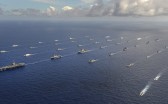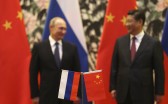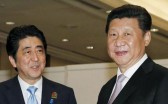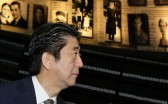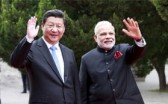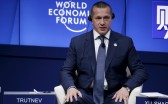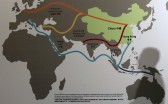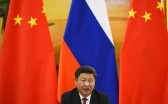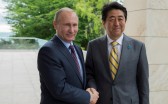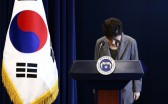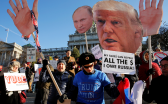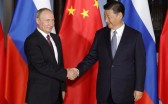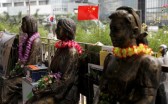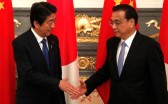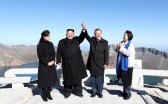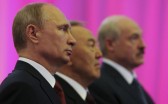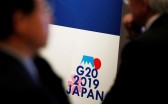Japan’s relations with China for about two years from September 2012 were the worst they had been since normalization in 1972. In late 2014 and over the first months of 2015, the impression spread that relations had turned a corner. Some saw signs of a return to the seesaw in relations observed for about two decades previously. Yet, since September 2012, China continues sending its patrol boats regularly into territorial waters around the Senkaku Islands. Evidence from Chinese commentaries on Prime Minister Abe’s April visit to Washington and Japanese reports of new Chinese oil and gas exploration very close to what Japan regards as the mid-line in the East China Sea suggest that, if this is a seesaw, it is a more troubled one, sinking much lower than before. We should not be lulled by the revival of summits or President Xi Jinping’s invitation to Abe to attend the September 3 seventieth anniversary commemoration into expecting stable, closer ties.
When the Japanese government decided to purchase three of the five major Senkaku Islands from a private owner, there were two different interpretations of this act in Beijing. The hardliners saw this as Japan’s open provocation vis-à-vis China and a challenge to its sovereignty. In contrast, the moderates saw that the Japanese government purchased the islands to cool things down by outdoing the Tokyo governor Ishihara Shintaro, who had declared he would buy the islands and construct a port and facilities for stationing staff. After Hu Jintao and Xi Jinping decided to take a hard-line approach, the Chinese media became fiercely confrontational against Japan and created an atmosphere that no longer allowed any one in China to express different public opinions. The backdrop to the hard-line policy taken by the Chinese leadership was the eighteenth National Congress of the CCP scheduled in November 2012. The purchase of the islands was made when the power struggle was at its height and, thus, no one could dare to take a soft stand against Japan.
Anti-Japanese demonstrations were allowed in a good number of cities and many of them became violent. As a result of arson, destruction, and looting, it was estimated that the damage inflicted on Japanese stores, restaurants and factories amounted to no less than JYP 10 billion. The Chinese government decided to send their patrol vessels regularly into territorial waters around the Senkaku Islands, with naval ships waiting in the vicinity for contingencies. Japan-China relations took a nosedive to the lowest level since 1972, and, in the view of some, even since the end of WWII.
However, China started seeking détente in 2014. Ministerial meetings gradually resumed from the spring, first in multilateral settings and then moving toward bilateral meetings in China. This upgrading of meetings culminated in the Abe-Xi meeting on the sidelines of the November APEC summit hosted by Xi in Beijing. Before the meeting, China demanded that Japan acknowledge that there is a territorial dispute over the Senkaku Islands and promise that Abe would not visit the controversial Yasukuni Shrine again. A few days prior to the November 2014 Abe-Xi meeting, upon the request of the Chinese, diplomats cleverly crafted an equivocal agreement that could be interpreted in different ways and cleared the way. In April 2015, when state leaders gathered in Indonesia to celebrate the sixtieth anniversary of the Bandung Asia-Africa Conference, Abe and Xi met for the second time and exchanged smiles as well as positive views about the development in bilateral relations in a more relaxed and amicable atmosphere. In May, Xi delivered a most friendly speech in front of a group of three thousand Japanese that visited Beijing, saying: “Through you, I extend my heartfelt greetings and good wishes to the Japanese people…The Japanese people were also victims of the war.”
What caused this change in Xi Jinping’s attitude towards Japan? There was no basic change of position on the Japanese side. First, any change in the status quo by physical force was unacceptable, and as long as China continued its provocative maritime advancement, Japan had no choice but to adopt some hedging measures, including strengthening the alliance with the United States. Second, the two sides did not let the questions of the Senkaku Islands and the Yasukuni Shrine disrupt the entire relationship. And third, the two powers were responsible to the region and the world for improving and developing their relations, so the leaders could meet without any preconditions. In fact, Japanese political heavyweights kept visiting China in an attempt to crack an opening in the gridlock. Such visits included those by Komeito leader Yamaguchi Natsuo in January 2013 and by the former prime minister Fukuda Yasuo in July 2014. It was the Chinese side that finally changed its position and sought rapprochement.
The factors in China’s policy shift seem to have included the following. First, there was increased tension in the military or security sphere. Two near miss incidents between military aircraft took place consecutively in May and June 2014. If an accident had occurred, it was highly likely that the conflict would have escalated rather badly. Xi wanted to avoid war no less than Abe. In addition to other reasons for this, he was in the midst of a serious anti-corruption campaign in the military.
Second, China’s economic slowdown became a source of increasing concern for the CCP leadership. In addition to the grave fiscal debt that had emerged in many localities, the impact of the economic slowdown on social stability was being felt. According to the Institute of Sociology of the Chinese Academy of Social Sciences, there was a resurgence of social contradictions in 2014, and “Hot Incidents of Social Contradiction/Conflict” that attracted nationwide attention amounted to around 400 cases that year. Especially, there was a large increase in labor strife. The Chinese leadership eventually recognized that the political confrontation with Japan was affecting economic exchange; the amount of Japanese investment from January to September 2014 decreased by 42.9 percent compared to the previous year. Minister of Commerce Gao Hucheng told a high-level economic delegation from Japan in September that a cooling in politics leading to a downturn in economics was something he did not want to see.
Third, internationally, China found it increasingly difficult to promote the “new model of major power relations” with the United States. This was because strategic competition with the United States was intensifying due to China’s continuous maritime advancement and their different interpretation of the legality of military actions in the Exclusive Economic Zones (EEZs). In Beijing, there was also recognition that the hard-line policy against neighbors, including Japan, the Philippines, and Vietnam, had not brought any benefit to China but, rather, had promoted a united front against China such as at the ASEAN Regional Forum or the Shangri-La Dialogue. These contributed to China’s emphasis on its Silk Road Initiative and neighborhood diplomacy, resulting in a “rebalancing” to Japan.
Finally, in terms of domestic politics, rapprochement with Japan proceeded while Xi Jinping consolidated his power base by making significant progress in his anti-corruption campaign. He expelled Xu Caihou, the former vice-chairman of the CMC from the party at the end of June 2014, and a month later formally announced that Zhou Yongkang, a former member of the Politburo Standing Committee, was under investigation. Zhou was eventually expelled from the CCP in early December. It was widely rumored that Xu and Zhou supported Bo Xilai, the disgraced former party secretary of Chongqing, in his challenge to Xi. In addition, there is an increasing number of Chinese tourists visiting Japan, who find the country culturally attractive and different from what they had learned through patriotic education.
Considering that these factors all remain in effect, we should be able to find good prospects for the bilateral relations to come. However, nothing is simple in Japan-China relations in recent years. Immediately after the amicable meeting with Xi, Abe made a successful visit to Washington, but the reporting on the visit by Xinhua was critical and satirical as ever. “Abe’s visit to the US and his laughable performance invites condemnation”; “Abe’s visit to the US and his laughable performance ends in voices of protest and strong criticism.” Such were the headlines of Xinhua articles on the topic.
Then in mid-June, Abe gave an exclusive interview to Phoenix Television, in which he replied to Xi’s May speech and sent out friendly messages to the Chinese people. “Japan inflicted sufferings to the peoples in Asia. It was on this deep remorse that Japan, to this day, has strived to contribute with all we have to the peace and development of the world, and particularly to development in Asian countries…Seventy years ago, Japan made a vow that we shall never go to war again, and this vow forever will not change.” Surprisingly, the mainland media ignored this interview. It was a snub to Abe, but it also looked as if the Propaganda Department did not pay much attention to Xi’s signal that he wanted to improve the bilateral relationship.
While the Japanese Diet discussed the new security legislation for strengthening the Japan-US alliance, retired PLA generals lashed out at the “revival of Japanese militarism,” as usual. Meanwhile, the Japanese side picked up on China’s construction of new oil/gas exploration platforms near the middle line that Japan regards as the dividing line for the EEZs in the East China Sea. The Japanese government criticized such unilateral action as against the spirit of the 2008 agreement on joint development. The defense division of the Liberal Democratic Party (LDP) rejected the initial draft of the annual Defence White Paper and made the Ministry of Defence add information on this move by China. The timing suggested that, faced with strong opposition, the LDP needed China’s mischief as ammunition in passing the controversial legislation.
Thus, despite the bases for resilience such as economic interdependence and cultural affinity, we easily can identify some structural factors that impede the smooth recovery in Japan-China relations. The leftist, hardliners in China are adamant on sticking to the “Japan threat theory.” Especially, the image of Abe as a “militarist” and “historical revisionist” is a convenient target for arousing nationalistic sentiments and justifying China’s strategic advancement and assertiveness. Xi Jinping is, arguably, torn between these and the reformist moderates who are more inclined towards mending ties with Japan for peace and development. It seems the gap between them is so wide that Xi has difficulties finding a middle ground. The “China threat theory” can also be handy for Abe, who faces societal opposition to his security legislation. At the same time, he knows the Japanese public understands the importance of China and that he would be criticized if he failed to improve bilateral relations.
The two governments are now negotiating over Xi’s invitation to Abe to attend the September ceremony to commemorate the war. Nowadays, no issue between Japan and China is simple, as it involves people’s emotions, economic and strategic interests, the international environment, and domestic politics. There are various factors that could drive the bilateral relations either way. But if the economic slowdown in China results in more labor strife and other signs of social instability, the leaders in Beijing would be tempted to tilt towards the hardliners and reactivate the “Japan threat theory” in an even bigger way. Japan and China have entered an era of both cooperation and conflict, and the seesaw in relations most likely will continue for some time. Yet, with China’s maritime advancement and heightened nationalism, this is a more troubled state than existed prior to the 2012 slide in relations. Recovery to that state seems very unlikely in the near future.
